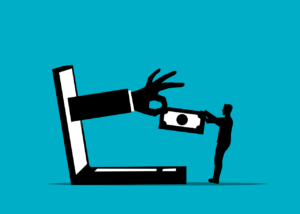Who hasn’t heard the adage, “Quitters never win and winners never quit?” But, you’ve probably heard Michael Jordan talk about his career and already know he learned a lot more from losing than winning. So, why is it that we think quitting or failing are bad things? They’re not. In fact, quitting is quite healthy in some life aspects. And, that’s the key to being successful — to know when to stop doing something to move forward.
Be More Successful by Not Doing these 6 Things
Research conducted by the University of Rochester reveals there are two primary motivations, approaching goals and avoiding goals. Now, that’s sounds strange, but it makes sense when explained. The former personalities find motivation in challenges but also know when it’s futile to continue. The latter group greatly avoid goals due to fear of failure. So, they don’t give up, even when it’s totally illogical to continue.
If we didn’t have to work hard to reach success, we wouldn’t appreciate it. If there’s something you’re putting off because it’s boring you, it’s hard, physically demanding or tiring…just get up and get it done. Quit avoiding it. There will be rewards along the way and there will be a great sense of accomplishment at the end. —Forbes
Call it bull-headed, stubborn, tenaciousness, or perseverance, it does shed light on a peculiar behavior that represents a real dichotomy. Studies show those who don’t give up typically “win” more often than people who quit. But, not everything works out that way. Realizing when it’s time to stop doing something is just as important as not giving up on realistic goals. To be more successful, you must stop doing these six things right now:
- Stop doubting yourself. Doubt and fear are powerful foes. Each acts as a paralyzing weapon which causes angst, anxiety, and more negative feelings. When you doubt your own abilities, you’re giving into an illogical fear. Tap into your confidence and let the self-doubt go.
- Stop procrastinating. Tomorrow is always a day away and it’s why the “Free Drinks: Tomorrow” meme is a popular one. Tomorrow is also known as an excuse. If everything was easy, you wouldn’t procrastinate and tackle it head on. So, stop putting things off and reap the rewards of accomplishment.
- Stop dodging choices. There’s always a choice and sometimes, too many. But, you always have a choice and if there’s not a good one, simply chose not to undercut yourself. Think outside of the box, if necessary. But whatever you do, don’t give away your power to choose.
- Stop the insanity cycle. We all know how Einstein defined insanity, by doing the same thing time and again and expecting a different result. Realize when your efforts are not yielding fruit and go in a different direction. After all, it’s the smart thing to do.
- Stop believing it’ll work out. When you wait for things to just “naturally work out,” you’ll wait an awfully long time. It takes hard work to get ahead and just waiting around won’t move the needle. Take action and you’ll experience traction.
- Stop saying “yes” all the time. If you’ve seen the movie “Yes Man” you already know that by breaking this habit, you’re not constantly giving your time away. “No” by itself is indeed a complete sentence and it can easily be far more healthy than saying “yes.”
What have you stopped doing to improve your chances of success? Which changes did you adopt that yielded the best results? Please share your thoughts and experiences by leaving a comment!
Interested in learning more about growing your business? Then just visit Waters Business Consulting Group.
[shareaholic app=”follow_buttons” id=”26833294″]



